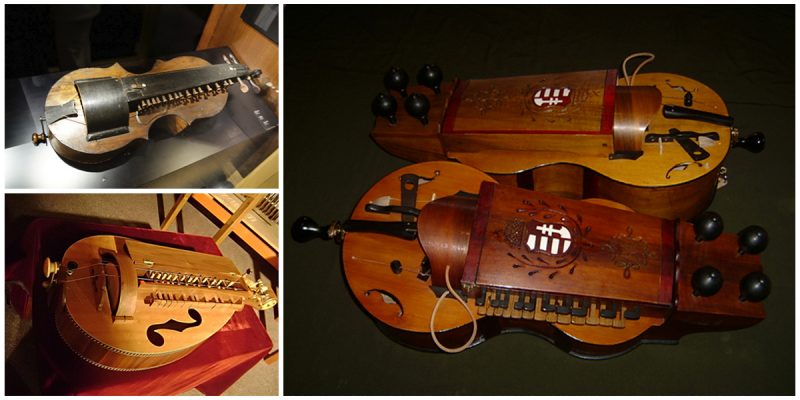The hurdy-gurdy, known in France as the vielle a roue or just vielle, has a long history and has been played by everyone from blind beggars to the nobility. The origin of the hurdy-gurdy remains unclear. Some believe that the origins of the instrument go back to the 10th century with the invention of the organistrum, a lute-shaped mechanically-bowed chordophone operated by two players; one turned the crank while another pulled the keys upward to change the musical pitch of the strings. This instrument, much bigger in comparison to modern hurdy gurdies, was only capable of playing slow melodies and simple harmony because of the hard key action and was primarily used in monastic and church settings to accompany choral music.
The various types of musicians of the medieval times, including waits, minstrels, and troubadours, used this instrument. It was one of the most popular in Europe. When the instrument was introduced to England in the 12th century, the bow was replaced by strings attached to a wheel, which was cranked by a handle. During that time, the English used the term “hurley burley” as a derogatory reference to the instrument’s music.
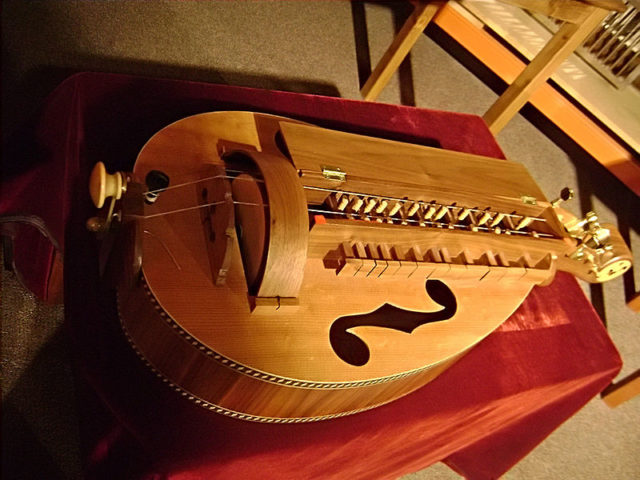
It didn’t take too long before street musicians used hurdy-gurdies in folk music. Over time, the frame of the instrument became smaller and smaller, until just one musician could play it alone. During the late Renaissance period, two characteristic shapes of hurdy-gurdies developed. One was a guitar-shaped type and the other had a rounded lute-type body made of staves. During this time, it was very popular (along with the bagpipe) and played almost everywhere in Europe. It is important to mention that the hurdy-gurdy was the first stringed instrument to which the keyboard principle was applied.
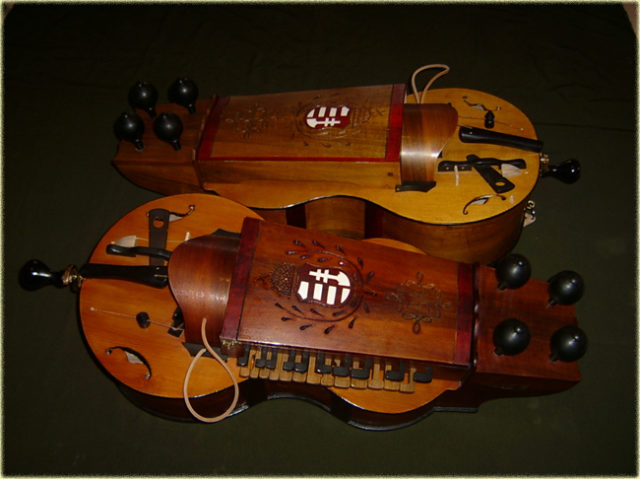
It was fashionable during the reign of Louis XIV, 1660 to 1715, as the vielle à roue (“wheel fiddle”). Music for this instrument was written by popular composers in the baroque period such as Vivaldi and later Mozart. This tradition of the hurdy gurdy continued until the reign of Louis XV ended.
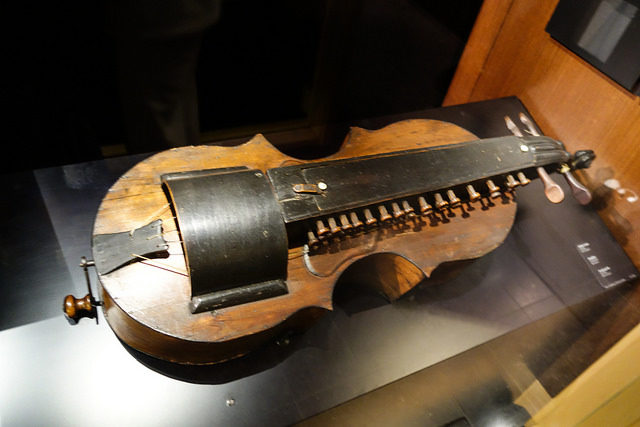
During the 18th and 19th centuries, the hurdy-gurdy was somewhat reinvented and had its moment of glory. It had up to six strings, as well as the addition of resonant sympathy strings, and it was adopted by the French aristocracy to interpret their “pastoral” baroque music.
It was known by different names during different times and at different places. In German it is Die Drehleier, Italian La Ghirondha, Spanish La Zamfonia, Hungarian Tekerolant, Swedish Lirans. Many folk music festivals in Europe feature music groups with hurdy-gurdy players who use the instrument in a variety of styles of music.
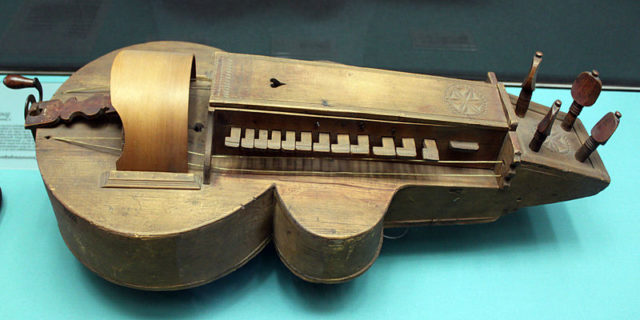
One craftsman who creates modern-day hurdy-gurdies, Olympic Music Instruments, says, “Many people think that it’s a wind instrument because it does sound somewhat like a bagpipe, because of the drone strings.
It also sounds a little like a fiddle, because it’s technically a bowed string instrument. The dog buzzing sounds a little like a rhythmic one-note kazoo. The whole gets wrapped together into a cross between a fiddle and a bagpipe, with someone keeping time on a kazoo.”
